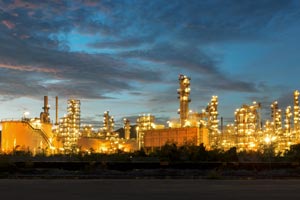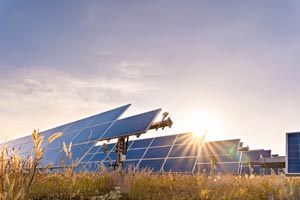
Energy
More than 76% of India's electricity has been generated by fossil fuel based power plants, 20% of electricity is generated by decarbonised sources: hydro, renewables and nuclear. Electricity plays a key role in the country's economic development. Committed to the energy transition, via the Electricity Act, a vast plan to build new decarbonised production capacity has been implemented. By 2027, the share of decarbonised production means should represent around 56% of the production park.
-

Oil and Gas
India is the 3rd largest consumer of energy and oil in the world and the 4th largest importer of liquefied natural gas (LNG), and consumption is growing.
India has also been Asia's leading exporter of petroleum products since 2009 and is Asia's 2nd largest refiner.
With the total number of retail fuel outlets rising to over 90,000 by 2023, 98% of the population connected to the city gas distribution network, India's oil demand is expected to rise by 40% to 6.7 mb/day by 2030 from 4.7 mb/day in 2021, and India's gas demand is expected to almost double to 115 BCM by 2030.
Oil and gas are major industries in the energy market and play a vital role in the global economy as the world's largest source of fuel. The oil and gas production and distribution sector involves highly complex and capital-intensive processes and systems, as well as cutting-edge technologies.
The industry is often divided into three segments:- - The upstream segment, which covers exploration activities, which include creating geological surveys and obtaining land rights, and production activities, which include onshore and offshore drilling.
- - The midstream sector, which covers the transportation, storage and trading of crude oil, natural gas and refined products. The main modes of transport are sea and inter-regional waterways and pipelines (oil and gas).
- - The downstream segment, which covers refining and marketing for heating purposes, petrol and the manufacture of petrochemical plastics.
Throughout these segments, it is imperative to control the risks associated with oil and gas, both for the employees of the many companies in this sector and for the damage caused to the environment and people. Apave, a specialist in risk management, is able to work on your projects from start to finish.
-

Renewable Energies
In the midst of an energy transition, India, the 3rd largest energy-consuming country, has risen to 3rd place in renewable energy production. It produces nearly 40% of its electricity needs. The country has set an ambitious target of 500 GW of renewable energy capacity by 2030.
Solar energy represents 56.6 GW of the 160 GW produced in renewable energies, with a growth of 137%, placing it in 3rd place worldwide, with the construction of solar parks.
Hydroelectricity comes just after solar, followed by wind power. Biomass energy is also expanding rapidly.
Apave supports you in your energy transition and renewable energy production performance issues.
Key Points